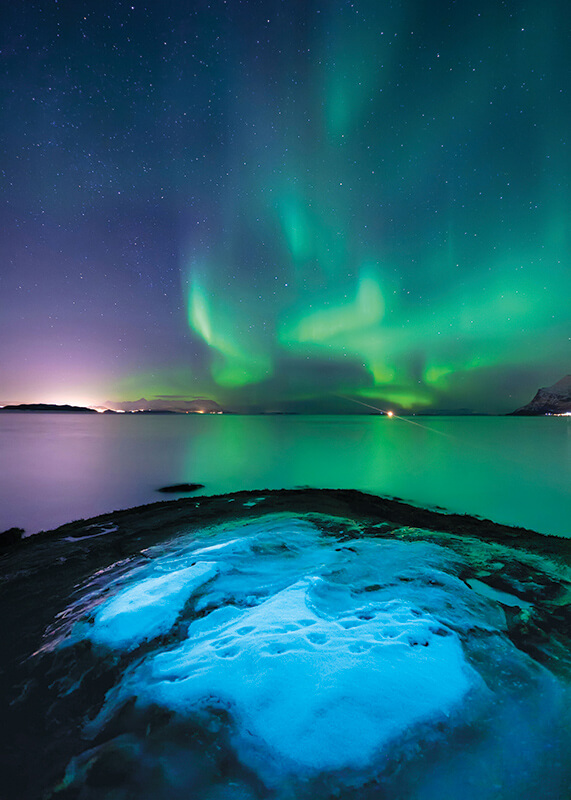Wait until you see what the sky has in store.
The magnificent, celestial wonder of the Southern Lights could be the highlight of your next cruise along the Pacific. The astronomical sight is the cousin of “aurora borealis,” which is known to leave viewers awestruck by sprawling, dreamlike hues.
If you find yourself in the middle of the ocean, bound for the port with the best view, you’re in an ideal situation: The best spots to see the Southern Lights, as with their Northern counterparts, are non-urban, wide open spaces with jet black skies and minimal commercial activity.
Seabourn’s cruises bound for Auckland, New Zealand, and Tasmania, Australia offer just that: a remote view Down Under that a telescope in North America can’t possibly deliver. The “aurora australis,” or southern lights, can be trickier to view because of their proximity to the South Pole, but they’re worth the adventure.
The aurora is visible in New Zealand relatively often. Some key locations to catch the “Southern Lights” of New Zealand include Stewart Island, the Otago Peninsula, and The Catlins, which all dot the coastline.
And the sight leaves plenty of room for enchantment, no matter how many times you’ve double-tapped images of it on Instagram or watched a timelapse video. Some lesser-known facts: they occur across other worlds in the solar system, including Venus and Mars. The auroral lights have a rich history that could have inspired 30,000-year-old cave paintings in France, according to Space.com, and appear in the writing of Aristotle and Descartes.
The Italian polymath Galileo Galilei, who you learned about in elementary school science, first referred to the galactic spectacles “aurora borealis,” derived from early Roman and Greek language. Aurora was a mythical goddess of the dawn, and Boreas is the Greek name for northern wind.
From Earth, the bursting Aurora is the result of the sun’s magnetic fields knotting to create sunspots. Those sunspots then serve as gateways for boiling particles at the parent star’s center to break free, powered by wind to eventually create a spectacle that’s entranced tourists worldwide.
Aurora was a mythical goddess of the dawn, and Boreas is the Greek name for northern wind.
As with any astronomical event, there are optimal viewing spots and times of year to observe the Southern Lights. While winter is often advised in North America, the best time in the Southern hemisphere is between March and September, when the skies are more often dark than bright.
Related Seabourn itineraries and amenities below
Finding just the right time to see them can be difficult, but you can check Aurora Service’s hourly forecast that pulls data from NASA’s Advanced Composition Explorer (ACE) spacecraft. But the odds of seeing aurora vary; the Australian government estimates that even a popular viewing spot like Tasmania has 1% to 2% chances, so it’s best to plan your trip around the sunspot cycle. You’ll know when you see it: the aurora band typically manifests in an east-west direction, and in active displays, the vivid electric currents interact in real time and occasionally break into small arc.
If you’re going to record, act quickly, as the aurora typically lasts between 15 and 40 minutes, though you may want to hang around. The active phase can occur again in two to three hours, and sometimes endure through the night.
 From Earth, the bursting Aurora is the result of the sun's magnetic fields knotting to create sunspots.
From Earth, the bursting Aurora is the result of the sun's magnetic fields knotting to create sunspots.

